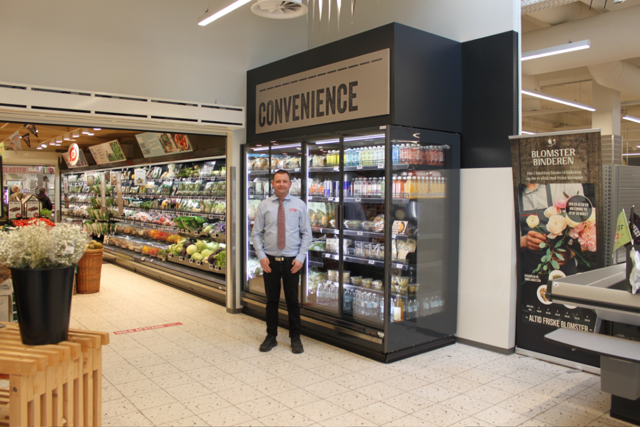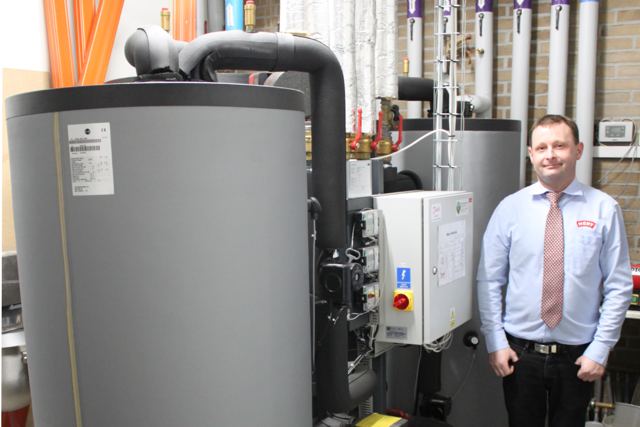After a full year of operations, Birkebæk can now see precisely how much energy, money, and CO₂ the store has saved. During the first year, MENY in Fredericia reduced its energy consumption by 135 MWh in total, with 56 MWh coming directly from the Danfoss Heat Recovery Unit (HRU) and 79 mWh through a year-long Danfoss EnergyTrimTM contract. What’s more, the store reduced its carbon footprint by 6.7 tons of CO₂, close to that of a car driving around the equator.
“There were no big surprises in terms of energy savings,” he says. “We are very close to the savings that the installer and Danfoss calculated in their proposal. In fact, we saved more in Year 1 than we thought we would. That we could also save so much CO₂ is really a plus.”
What did surprise Birkebæk was how simple the installation and operation of the new heat recovery unit has been. “None of my 55 employees noticed anything. The installer came and set up the heat recovery unit and made sure it was running optimally, and it has ever since. We have all the hot water we need for cleaning and restrooms, and all the heat we need year-round.”
According to the installer, Peter Thomsen, Manager at Dansk Varmegenvinding, MENY’s experience is a good example of what many supermarkets can expect. “We’ve installed 50 heat recovery units so far with an average payback period of 2.4 years. For this project, we proposed a heat recovery unit that best matched the store’s size and refrigeration system from the 83 versions available from Danfoss. While the MENY results are typical, it’s important to note that all installations vary with regards to site size, electrical wiring, and piping. It’s also critical that the CO₂ refrigeration system works as an energy system and produces sufficient heat.”
In addition to the simplicity of the Heat Recovery Unit’s installation, Birkebæk did have one other surprise. In the middle of the first winter of operation, he received an unannounced visit from the district heating company that provided the store with heat. “They were sure that the meter that measures the district heating water flow was broken,” he smiles, “because they couldn’t see that we were drawing many kWh from the system. We could assure them that everything was working just fine.”


